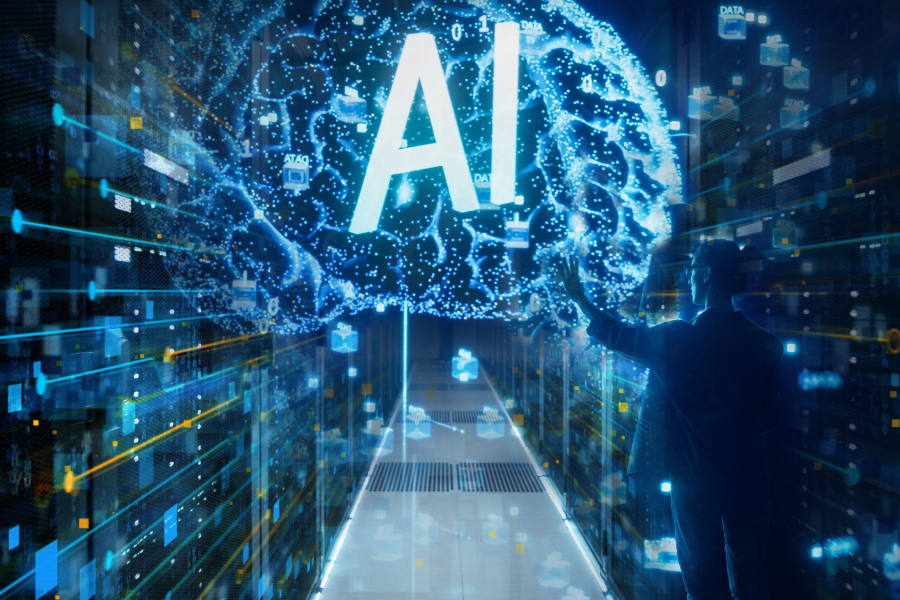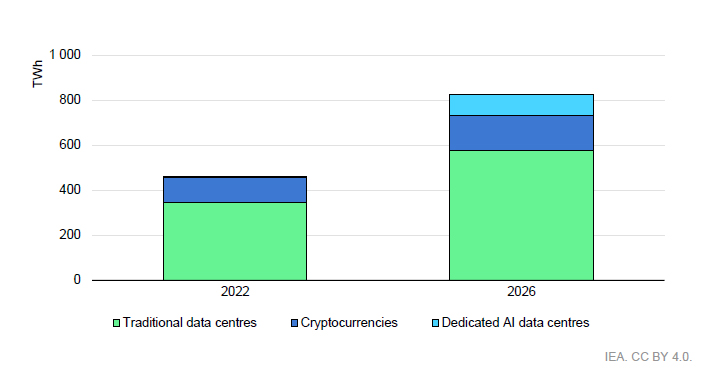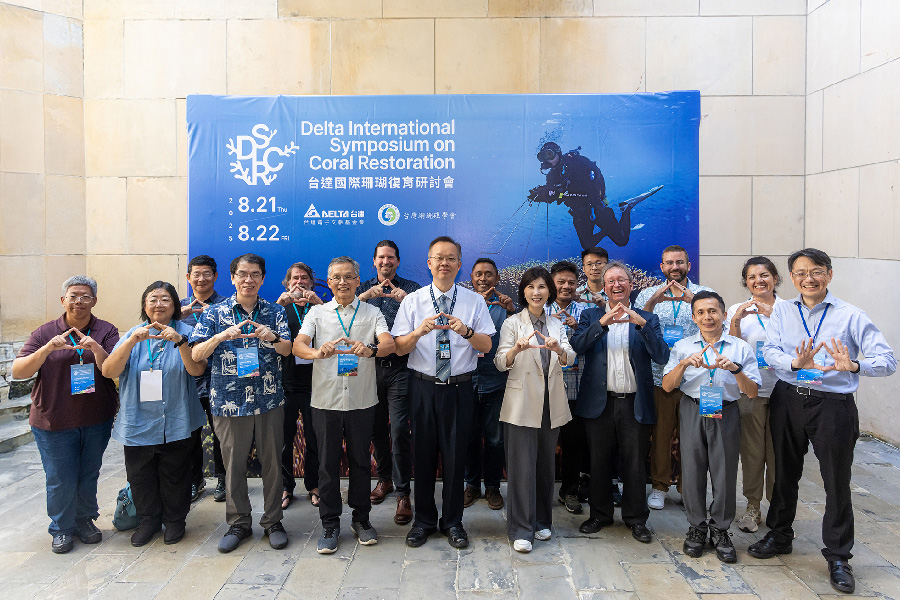The “digitalization” and “intelligence” era is coming. The computation of data centers, the application of artificial intelligence (AI), and the investment in virtual currency are gradually becoming a part of life and work. But did you know the power consumption of these three types of technology is surprisingly high?
According to the IEA, in 2022, the electricity consumed by data centers, AI, and cryptocurrencies combined accounted for nearly 2% of the world’s total electricity demand. Moreover, it is predicted that within the next 3 years, such total electricity consumption will double, making it equivalent to the electricity consumed by a nation the size of Japan. This is undoubtedly an emerging, yet significant power-consuming behemoth that cannot be ignored.
 Addressing the high carbon emissions of the three major technologies starting with thermal solutions.
Addressing the high carbon emissions of the three major technologies starting with thermal solutions.
Future data center electricity consumption is expected to grow explosively by 30%-100%
The power demand of the data center mainly comes from two parts: computing and cooling systems, each accounting for 40% of the total power consumption, while the remaining 20% comes from other related information technology (IT) equipment. In terms of geographical distribution, there are currently over 8,000 data centers worldwide, mainly located in the United States, the European Union, and China. The IEA further predicts that the number of data centers built in these three regions will experience explosive growth, with electricity consumption increasing by 30% to 100%.
The overall power consumption of the AI industry is feared to increase tenfold in the next three years
Last year, Danny Quinn, the founder of DataVita, told the British Broadcasting Corporation (BBC): “The power consumption of a standard server rack for traditional servers is about 4 kilowatts (kW), but the energy requirement for setting up a rack of AI servers is 20 times higher, at 80 kilowatts.” It must also be mentioned that the average power consumption of a typical Google search is about 0.3 watt-hours (Wh), while ChatGPT, which is increasingly relied upon by the public, has an average power consumption of 2.9 watt-hours (Wh) per query, which in comparison is 9.5 times higher! The IEA estimates that in the next three years, the AI industry is expected to experience exponential growth, with the overall power consumption being at least 10 times the demand in 2023.
Cryptocurrency Power Demand Equivalent to Total Power Consumption of the Netherlands
Looking specifically at cryptocurrencies, tracing back to the data from 2022, they accounted for 0.4% of the global annual electricity demand. This number may seem small, but it actually corresponds to the total electricity consumption of the entire country of the Netherlands. Furthermore, it is projected that by 2026 the power consumption will increase by over 40%.
 Estimated electricity demand from traditional data centers, dedicated AI data centres and cryptocurrencies. (Image source: IEA)
Estimated electricity demand from traditional data centers, dedicated AI data centres and cryptocurrencies. (Image source: IEA)
Hyperscale data centers will play a key part in developing solutions to reduce carbon emissions
How Do We Reverse the Misconceptions of High Carbon Emissions in the Three Major Technologies? We need to start with regulations and techniques used! In 2020, the European Union began establishing efficiency standards for data centers. The following year, Europe introduced the Climate Neutral Data Centre Pact, which commits to measurable goals in proving energy efficiency, purchasing 100% carbon-free energy, maintaining and reusing servers, and exploring heat recovery methods. The aim is for data centers to achieve carbon neutrality by 2030. Although this initiative is voluntary and has no legal binding, it has attracted over 100 data center operators to sign the agreement, including well-known companies such as Equinix and Digital Reality.
On the other hand, adopting high-efficiency cooling systems, optimizing server operations through machine learning, and even shifting power demand loads temporally and spatially are all techniques that have been utilized to achieve decarbonization. According to global market trends, small-scale data centers are gradually transitioning to hyperscale data centers. These types of data centers occupy an area of over 10,000 square meters and have a power capacity of at least 10 MW. They can typically achieve optimal processor efficiency, reduce power consumption during idle states, and improve energy efficiency. In its "Study on Greening Cloud Computing and Electronic Communications," the European Union has identified hyperscale data centers as a key decarbonization solution in the information and communications technology sector.
In the future, we hope to see more thermal solution technologies in the development stage being introduced, such as specific low-viscosity fluids to cool other components, so that users can use AI and mining without feeling guilty about the environmental impacts.

















